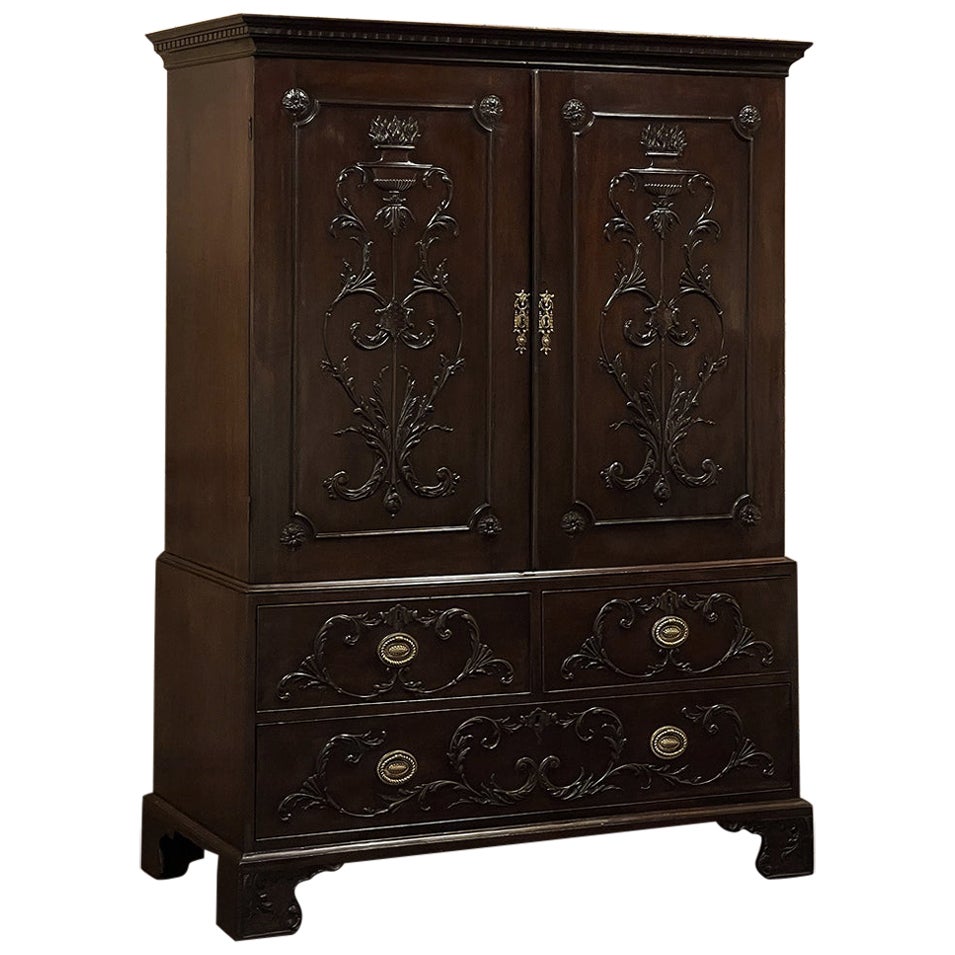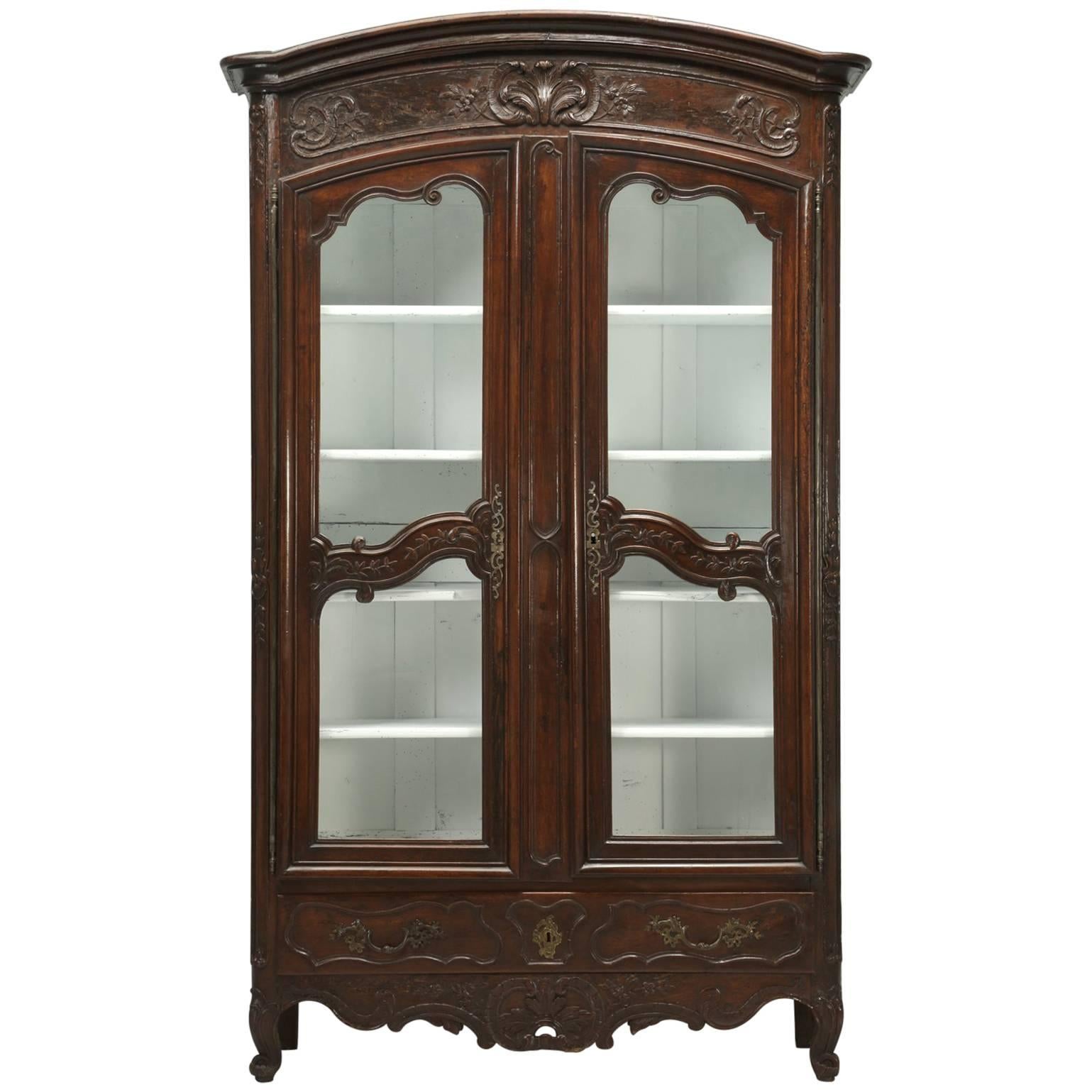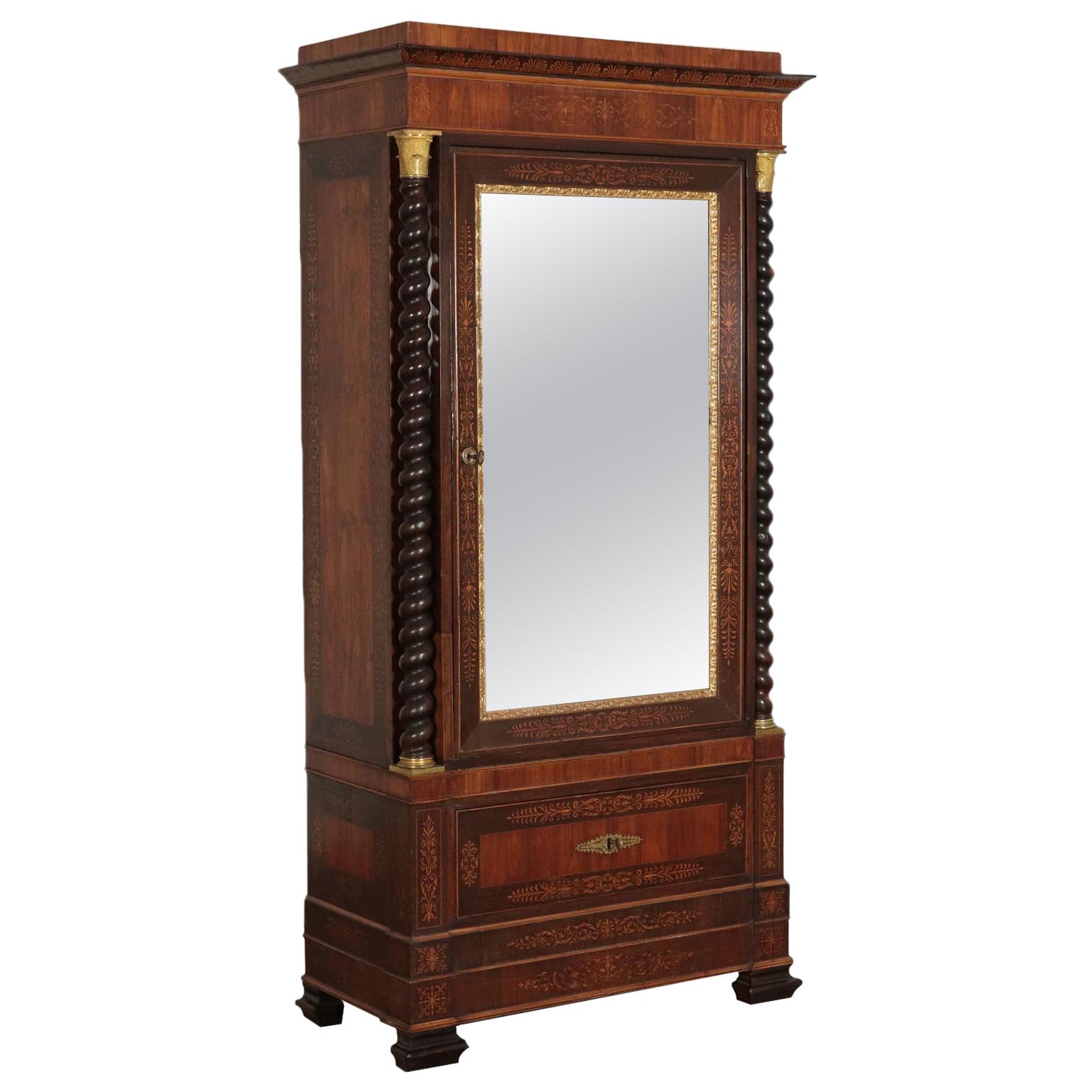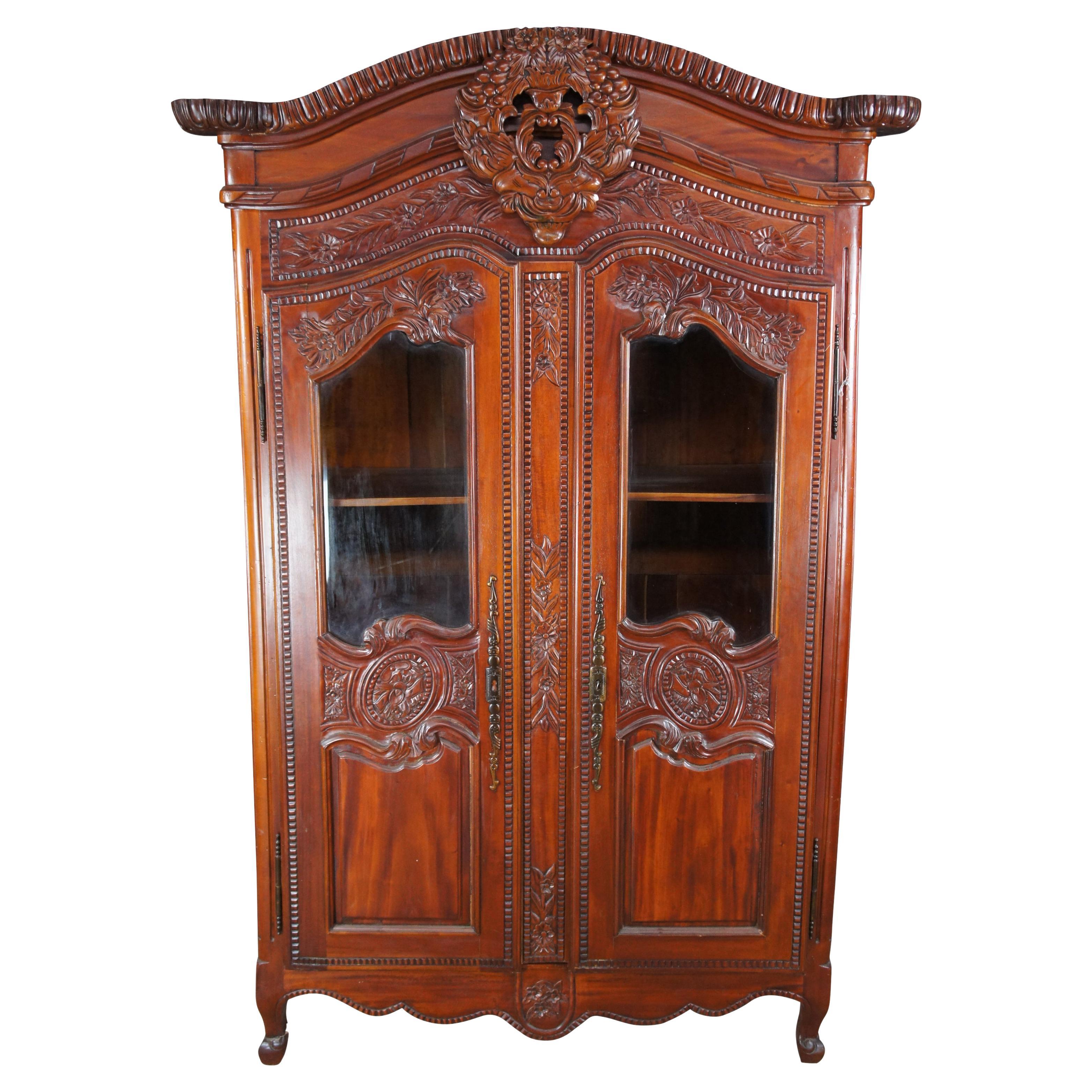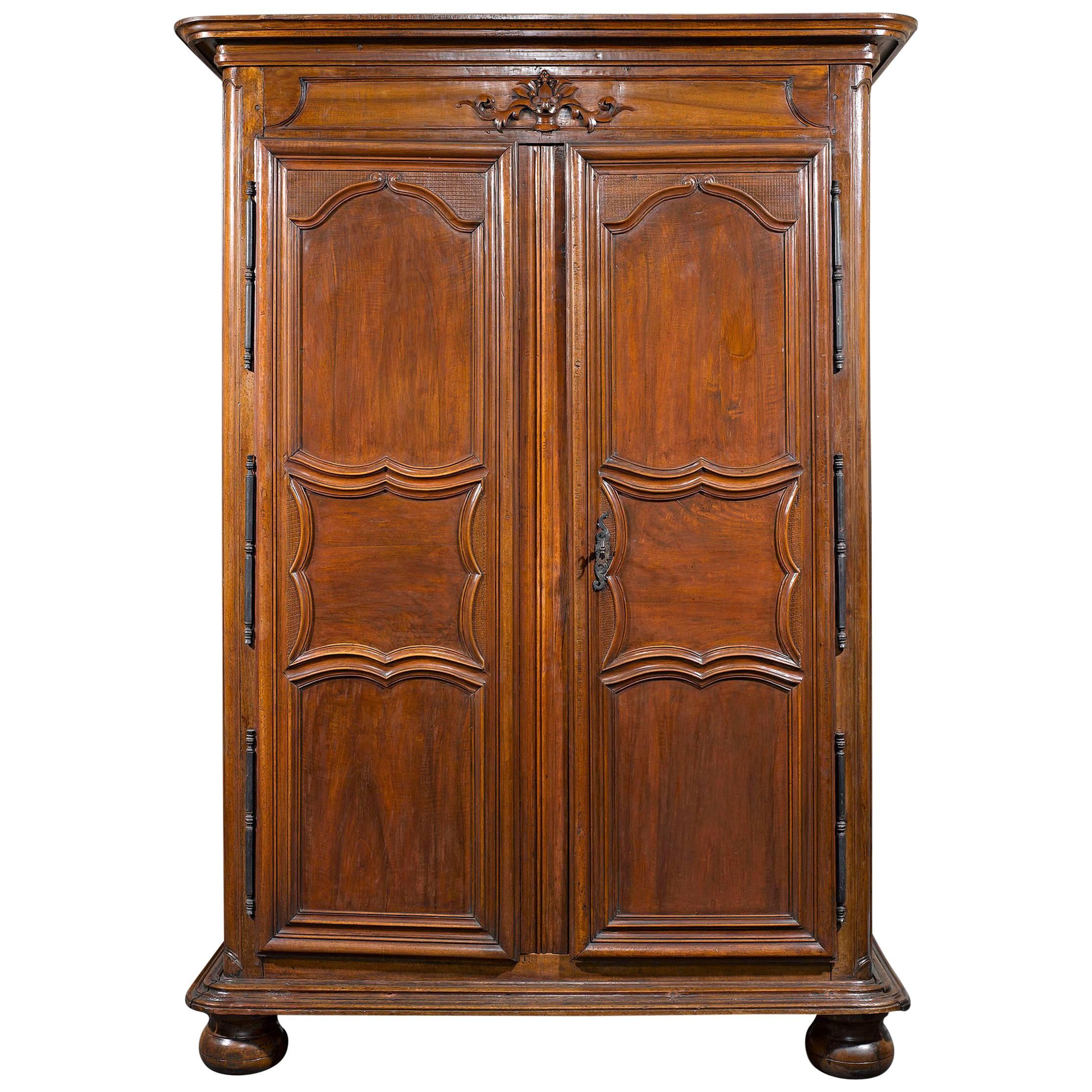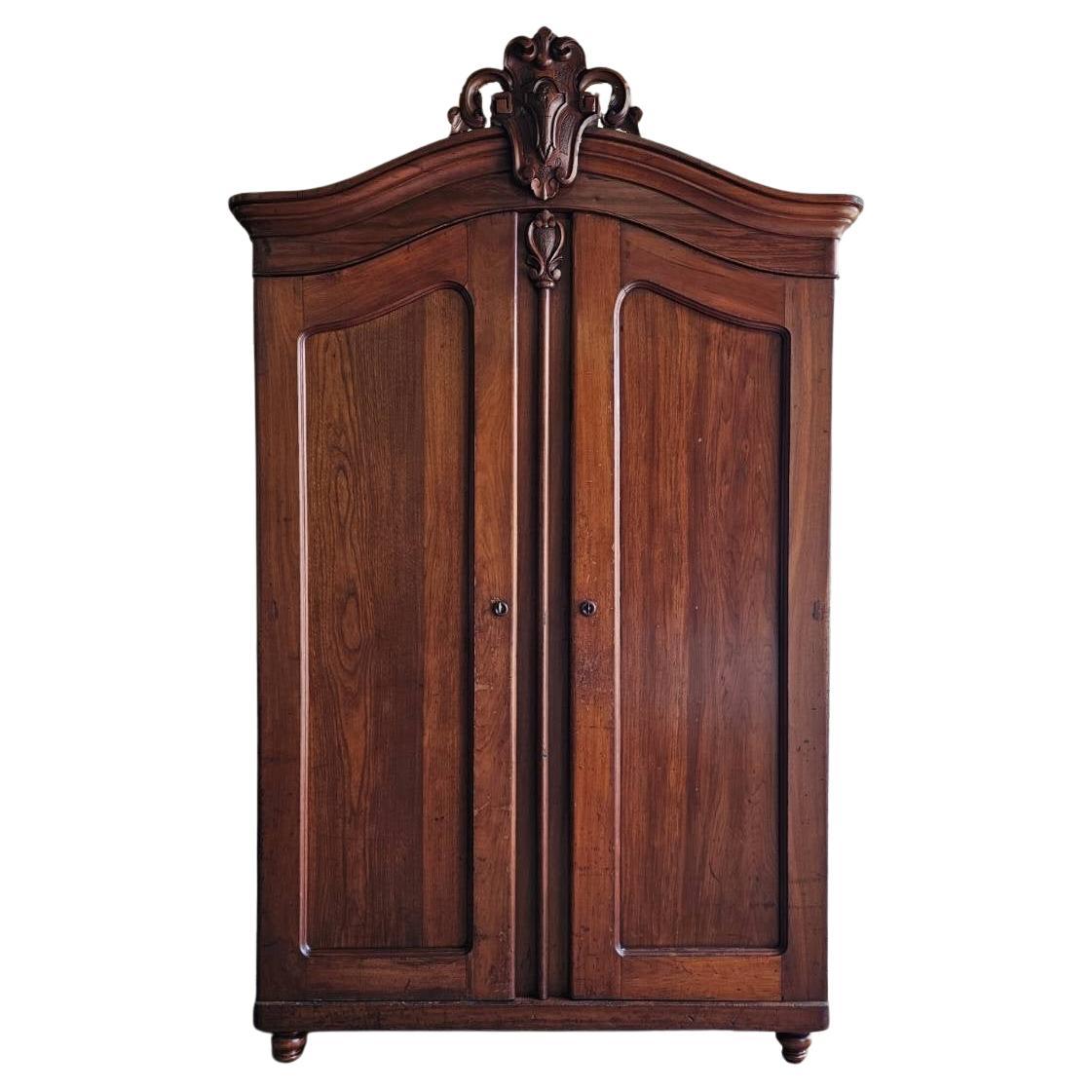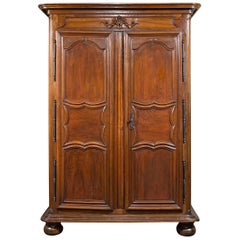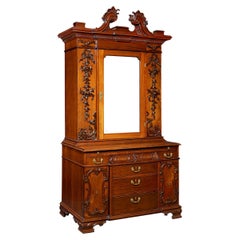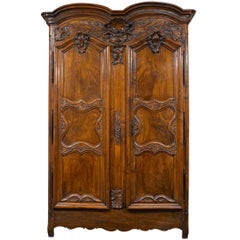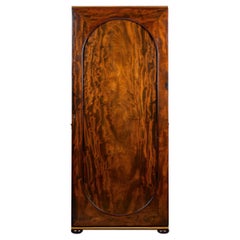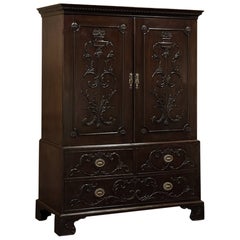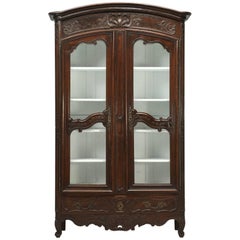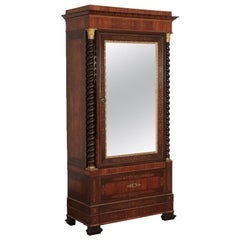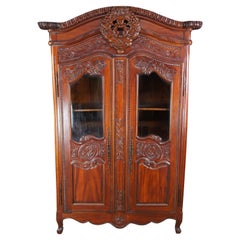Items Similar to John Henry Belter Rosewood Armoire
Want more images or videos?
Request additional images or videos from the seller
1 of 6
John Henry Belter Rosewood Armoire
$69,500
£53,136.45
€61,202.46
CA$97,390.81
A$108,727.68
CHF 56,971.67
MX$1,330,933.52
NOK 723,540.77
SEK 682,207.08
DKK 456,760.22
About the Item
One of the rarest furniture forms created by John Henry Belter, this armoire is a testament to this legendary cabinet maker's talent. Recognized as a Pioneer in design and craftsmanship, Belter is widely considered the finest furniture maker of the Rococo Revival period. His mastery over his Craft is on full display in this monumental piece. Its massive form and serpentine lines, along with a profusion of lavishly carved details, place it among the masterpieces of the Rococo Revival style.
The opportunity to acquire a Belter armoire of this caliber is extremely rare, as only a handful are known to exist. In terms of technical craftsmanship, it features all the hallmarks of Belter's distinctive style. The seamless serpentine Silhouette at its apex is shaped from the most delicate laminated wood, a technique that Belter himself pioneered and perfected. Exquisitely carved at the crest, drawers, and corners, this rare armoire is a stunning example of the ideals set forth by this acclaimed designer.
While few craftsmen in history leave such an indelible mark on their Craft, even fewer are so dedicated to quality and perfection that they never made a profit from their art. Thomas Chippendale was one such artisan, as was Louis Comfort Tiffany a century later. Belter is also among these legendary greats, whose dedication to perfection resulted in some of the most stunning works of art the world has seen. While his factory closed its doors soon after his death, his furniture remains highly sought after for its incomparable quality and craftsmanship.
After being formally trained in Württemberg, Germany, Belter helped introduce the Rococo Revival style to America in 1833 and irrevocably reshaped the Craft by developing new ways to strengthen laminated wood. Belter’s ingenious technique involved layering strips of wood with the grain running in different directions, thus increasing the wood’s strength to support the intricate, curved designs popular during the Victorian period. Though he worked in America for just under 30 years, he almost single-handedly bridged the gap between the craftsmanship of the 18th century and the profound new technologies of the 19th century,
circa 1860
Measures: 108" high x 56 1/2" wide x 21 1/4" deep.
- Creator:John Henry Belter (Maker)
- Dimensions:Height: 108 in (274.32 cm)Width: 56.5 in (143.51 cm)Depth: 21.25 in (53.98 cm)
- Style:Rococo Revival (In the Style Of)
- Materials and Techniques:
- Place of Origin:
- Period:
- Date of Manufacture:circa 1860
- Condition:
- Seller Location:New Orleans, LA
- Reference Number:Seller: 28-14881stDibs: LU89118610113
About the Seller
5.0
Recognized Seller
These prestigious sellers are industry leaders and represent the highest echelon for item quality and design.
Established in 1912
1stDibs seller since 2010
109 sales on 1stDibs
Typical response time: 4 hours
- ShippingRetrieving quote...Shipping from: New Orleans, LA
- Return Policy
Authenticity Guarantee
In the unlikely event there’s an issue with an item’s authenticity, contact us within 1 year for a full refund. DetailsMoney-Back Guarantee
If your item is not as described, is damaged in transit, or does not arrive, contact us within 7 days for a full refund. Details24-Hour Cancellation
You have a 24-hour grace period in which to reconsider your purchase, with no questions asked.Vetted Professional Sellers
Our world-class sellers must adhere to strict standards for service and quality, maintaining the integrity of our listings.Price-Match Guarantee
If you find that a seller listed the same item for a lower price elsewhere, we’ll match it.Trusted Global Delivery
Our best-in-class carrier network provides specialized shipping options worldwide, including custom delivery.More From This Seller
View All19th Century French Provincial Armoire
Located in New Orleans, LA
This fine French provincial double door armoire is beautifully crafted of fine walnut. Adorned with elegant, Rococo-inspired molding and featuring exceptional well-preserved, origina...
Category
Antique 19th Century French Rococo Wardrobes and Armoires
Materials
Walnut
Mahogany Bureau Cabinet After Thomas Chippendale
By Thomas Chippendale
Located in New Orleans, LA
This extraordinary Irish bureau cabinet was crafted based on a design for a desk and bookcase drawn from Thomas Chippendale’s famed 1762 edition of The Gentleman and Cabinet-Maker's ...
Category
Antique 18th Century Irish Chippendale Cabinets
Materials
Mirror, Mahogany
French Provincial Double Door Armoire
Located in New Orleans, LA
This majestic French walnut armoire is a stunning example of the Provincial style. Standing nearly nine feet high, this rare armoire featuring splendid rocaille carvings above its do...
Category
Antique 18th Century French French Provincial Wardrobes and Armoires
Materials
Wood, Walnut
Mahogany Upright Cane Cabinet
Located in New Orleans, LA
Classical style and impeccable design distinguish this English upright cane cabinet. Crafted of lustrous Cuban mahogany, this case is comprised of a beautifully paneled door which op...
Category
Antique 19th Century English Cabinets
Materials
Brass
19th Century Dutch Bureau Bookcase
Located in New Orleans, LA
This magnificent and important Dutch mahogany bureau bookcase, exuberantly carved and adorned with superb figural carvings, impressive scrolled feet and elaborate applied decoration....
Category
Antique 19th Century Dutch Other Bookcases
Materials
Mahogany
English Upright Cane Cabinet
Located in New Orleans, LA
This English cane cabinet exhibits classical style and impeccable design. Crafted of lustrous Cuban mahogany, this upright case features a beautifully paneled door which opens to rev...
Category
Antique 19th Century English Cabinets
Materials
Brass
$28,500
You May Also Like
19th Century German Mahogany Wardrobe ~ Linen Press
Located in Dallas, TX
19th Century German Mahogany Wardrobe ~ Linen Press will make the perfect addition to the bedroom or dining room, being equally adept at storing clothe...
Category
Antique 1870s German Baroque Revival Wardrobes and Armoires
Materials
Bronze
Antique French Walnut Armoire, China Cabinet, or Bookcase circa Early 1800s
Located in Chicago, IL
Antique French Walnut China Cabinet, Vitrine, Bookcase or Armoire, probably constructed over 200-years ago. Our Old Plank restoration department, went through the Armoires structure,...
Category
Antique Early 1800s French Louis XV Wardrobes and Armoires
Materials
Steel
Carlo X Wardrobe Rosewood, Italy, 19th Century
Located in Milano, IT
Wardrobe with one door and a drawer. It appears architecturally as a plinth with rectangular base on vase-like feet and marked on the top with a light frame. To break the architectur...
Category
Antique Early 19th Century Italian Charles X Wardrobes and Armoires
Materials
Rosewood
French Provincial Louis XV Mahogany Wedding Armoire Wardrobe Display Cabinet 85"
Located in Dayton, OH
Vintage French Louis XV / Provincial style wedding armoire / wardrobe / linen press or display cabinet, circa last quarter 20th century. Made of mahogany featuring baroque styling wi...
Category
Late 20th Century Louis XV Wardrobes and Armoires
Materials
Mahogany
$2,200 Sale Price
20% Off
19th Century French Walnut Armoire Wardrobe
Located in Unionville, TN
This towering wardrobe dates to circa 1840s, during what’s known as the Louis Philippe period in France, a time when furniture began to shift toward refined, functional elegance. Tho...
Category
Antique Early 19th Century French Louis Philippe Wardrobes and Armoires
Materials
Walnut
Empire mahogany two door wardrobe
Located in Cheshire, GB
Empire wardrobe, the projecting removable cornice with brass decoration flanked by turned finials. Above two large beeveled mirror doors opening to reveal large hanging area. FLanked...
Category
Antique Late 19th Century French Wardrobes and Armoires
Materials
Wood
$5,279 Sale Price
20% Off
More Ways To Browse
Antique Belts
Antique Belter Furniture
German Wurttemberg
19th Century Belter Furniture
Tiffany Belt
Belter Victorian
Rococo Display Cabinet
Corner Cabinet 2 Piece
Antique Rosewood Corner Cabinet
Chippendale Display Cabinet
Louis Comfort Tiffany Marks
Rococo German Cabinet
Rosewood Chippendale
Belter Rosewood Furniture
Antique Rosewood Armoire
18th Century German Made Armoire
Tiffany Display Cases
French Cherry Armoire
